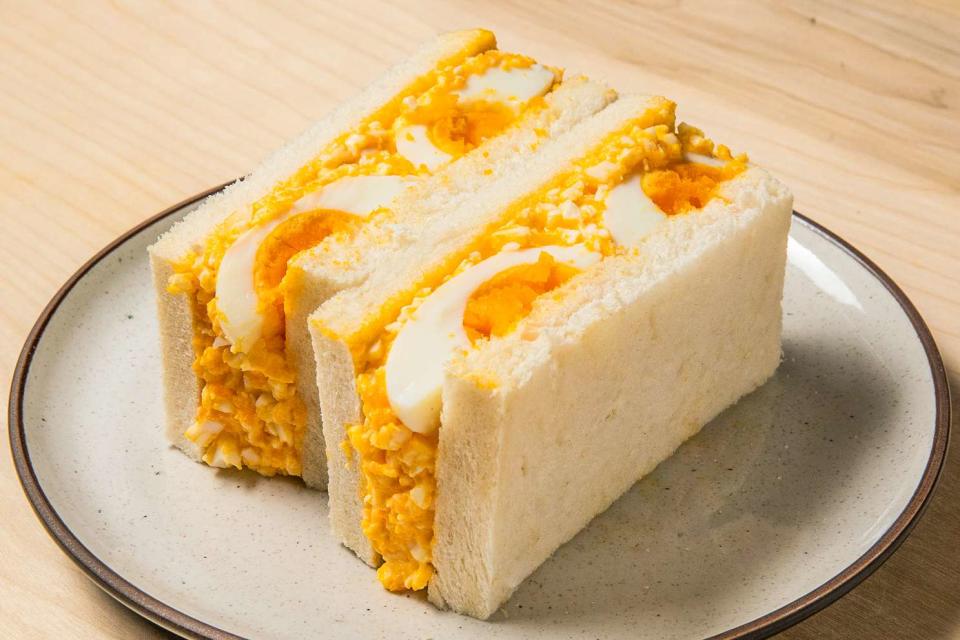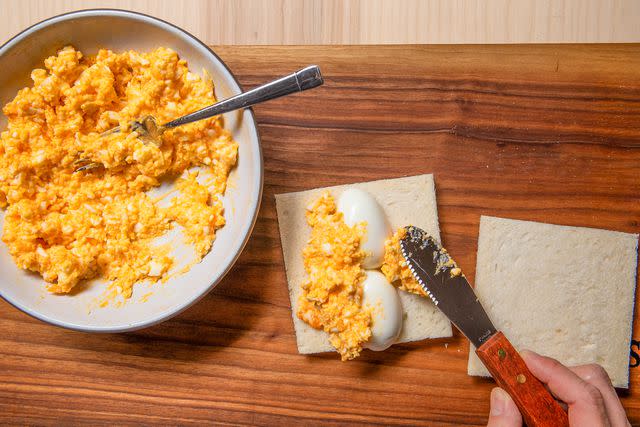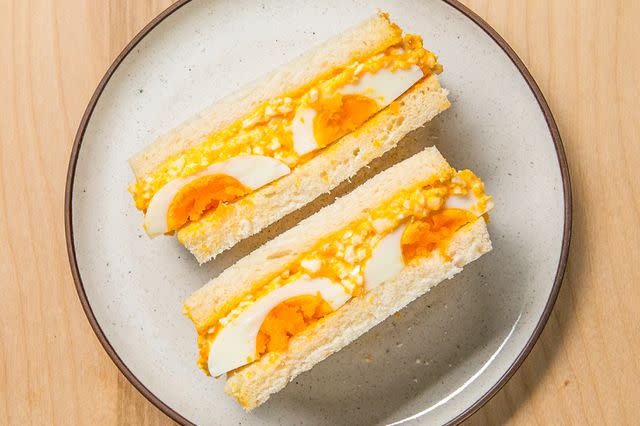For the Best Egg Salad, Make It the Japanese Way (It’s Just 4 Ingredients)
This creamy, dreamy egg salad makes the perfect sandwich.

Simply Recipes / Frank Tiu
I love eggs. Yes, I declare this with pride and egg-citement... especially when it comes to breakfast. Sunny side-up eggs? Check. Poached eggs? Yes. Tamago sando? Absolutely. Never heard of it? You’re going to want to make this immediately.
Tamago sando, commonly known as a Japanese egg salad sandwich, is one of my top breakfast choices. It is also one of the few breakfast items that I would gratefully devour cold because it tastes even better that way. Trust me, I’ve had scrambled eggs on toast (and it’s good), but tamago sando is on a whole different level of deliciousness.
And while I love this egg salad for breakfast, it also makes a perfect lunch, whether in sandwich form, atop a salad, or scooped with crackers. Plus, Japanese egg salad and even a complete tamago sando can be made ahead of time, which makes packing up breakfast or lunch a breeze.
What Makes Japanese Egg Salad Special?
Japanese egg salad has a few things going for it that set it apart from your typical American egg salad. First, the eggs are cooked to the perfect jammy consistency so the center is creamy, soft, and melty, just like ramen eggs. This jam-like consistency is the key to making the egg salad light and creamy.
A little Kewpie mayo, a mayonnaise made with egg yolks for a creamier texture, makes this egg salad even dreamier. I buy mine at Walmart, but you can swap it for your favorite mayo brand in a pinch.
You can eat Japanese egg salad any way you like, but it is commonly turned into a popular sandwich: the tamago sando, known for its light and fluffy texture. One of its defining features is shokupan or Japanese milk bread, a favorite that can be found in many Asian bakeries. It is commonly baked in a Pullman loaf pan, ensuring each side is perfectly square and nicely browned. The interior is white and soft, like a brand-new pillow. If you have trouble finding shokupan, you can substitute it with soft white bread.
To ensure a perfectly uniform texture, color, and flavor, the caramel brown crust is always sliced off. I like to eat the crust since my dad somehow convinced me when I was a kid that the crust sticks are the “French fry” version of bread. I’ve been bamboozled and somehow, it worked—I am still eating shokupan “French fries”.

Simply Recipes / Frank Tiu
How To Make My Japanese Egg Salad
To make 2 sandwiches or 4 servings, you’ll need:
8 large eggs
1 tablespoon Kewpie or other mayonnaise
1 dash sugar
Salt, to taste
1 teaspoon milk, or as needed
4 slices shokupan or other thick, fluffy white bread, edges trimmed, optional
Before assembling your egg salad, cook eight eggs until jammy—you want the yolk mostly translucent, but not super runny. If you’re boiling your eggs, about 6 minutes should do the trick. If you’re steaming them, cook for 9 minutes. Cool in an ice water bath before peeling. Set aside two eggs (one egg per sandwich) for slicing later.
Mash the rest of the jammy eggs until they are the size of small gravel. Add a tablespoon of Kewpie mayo, a dash of sugar, and salt to taste along with a teaspoon of milk. Mash until combined and the egg salad texture is to your liking. If your eggs are overcooked or you want your salad creamier, add just a little more mayo and milk.
To make a tamago sando, place a slice of bread on a flat surface. Slice one of the reserved whole eggs in half and place the halves in the center of the bread. Spread half of the egg salad mixture on top of and around the egg halves until it is even and smooth. Place another slice of bread on top. Slice the sandwich down the middle of the egg halves, revealing a beautiful cross-section. Repeat with the remaining bread and egg salad.
The egg salad will keep for a few days in an airtight container in the fridge. You can make the sandwich up to a day ahead of time and wrap it tightly in parchment paper, foil, or plastic wrap before storing it in the fridge.

Simply Recipes / Frank Tiu
Read the original article on Simply Recipes.

